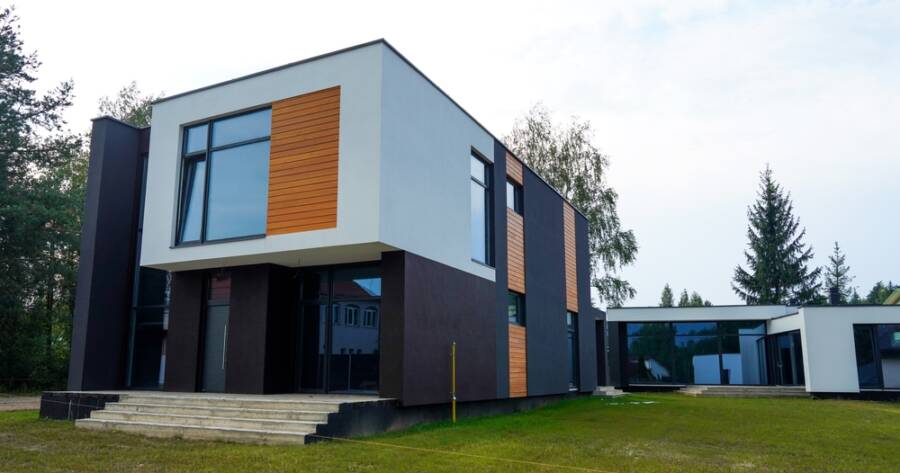For many homebuyers, affordability is a top concern when choosing between prefabricated and traditional homes. Prefabricated houses, often called prefab homes, are built in factories and assembled on-site, promising lower costs and faster construction. But are they truly a cheaper alternative? Understanding the expenses, materials, and long-term value can help determine whether a prefab home is the right financial choice.
The Cost of Construction: Prefab vs. Traditional
One of the biggest selling points of prefabricated homes is their lower initial cost. Because these homes are built in factories, manufacturers can buy materials in bulk, reducing waste and expenses. The controlled environment also prevents weather-related construction delays, further lowering costs.
Traditional homes, on the other hand, require on-site construction, often leading to unpredictable labor and material expenses. Customization also plays a significant role in costs. Prefab homes typically have limited design options, while traditional homes allow for greater flexibility, which can drive up expenses.
Despite these differences, the cost of constructing either type of home is still considerable. A new traditional family home typically costs between $100 and $500 per square foot, with high-end custom designs falling at the upper end of this range. In contrast, architecturally designed prefab homes typically range from $250 to $350 per square foot.
Long-Term Expenses and Maintenance
While prefabricated homes may be cheaper upfront, long-term expenses can add up. The quality of materials used in prefab construction varies, and some lower-cost models may require more maintenance over time. Traditional homes, built with standard construction techniques, often have sturdier foundations and longer-lasting materials.
Resale value is another important factor. Some prefab homes may not appreciate in value as much as traditional homes, depending on location, build quality, and market demand. Homeowners should consider long-term financial impacts before deciding.
Energy Efficiency and Utility Savings
Energy efficiency can significantly impact the overall cost of owning a home. Many prefabricated homes are built with modern insulation and energy-efficient designs, leading to lower utility bills. Factory construction allows for precise fitting of materials, reducing air leaks and energy loss.
Traditional homes, however, can be designed with high-efficiency features as well. Custom-built houses may offer better long-term energy savings, depending on the materials and systems installed. While prefab homes have an advantage in energy efficiency, homeowners should compare specific models before making a decision.
Customization and Additional Costs
Customization is one area where traditional homes have an advantage. Prefabricated homes often come with standard layouts and features, while traditional homes allow for personalized designs, from room sizes to unique architectural elements.
However, modifying a prefab home can add unexpected costs. Buyers who need additional square footage, high-end finishes, or upgraded appliances may find that these extras increase the price closer to that of a traditionally built home. It’s essential to factor in customization needs before assuming a prefab home is the most affordable option.
Resale Value and Market Demand
When considering a home purchase, it’s important to factor in long-term resale value. Traditional homes generally appreciate over time due to their durability, customizable designs, and strong market demand. They are often located in established neighborhoods, which can further drive up property values.
Prefabricated homes, however, may not gain value at the same rate. Some prefab models, especially lower-end ones, can depreciate like manufactured homes. However, high-quality prefab homes built with durable materials in desirable locations can still offer strong resale potential.
Financing and Insurance Considerations
Financing a prefabricated home can be different from securing a mortgage for a traditional house. Some lenders may have stricter requirements for prefab homes, especially if they are classified as modular or manufactured. Interest rates and loan terms can vary, making it essential to compare options.
Additionally, insurance costs may differ, as some prefab homes are more vulnerable to weather damage compared to traditional brick-and-mortar houses. Buyers should research lenders and insurers to ensure they receive favorable terms and adequate coverage for their investment.
Which Option Saves More Money?
Prefabricated homes can be a more affordable choice in terms of upfront costs, but long-term expenses and customization needs should be carefully considered. While they offer faster construction and potential energy savings, their resale value and material durability may not always match that of traditional homes.
Homebuyers should compare costs, maintenance, and future financial benefits to determine the best investment for their needs.

